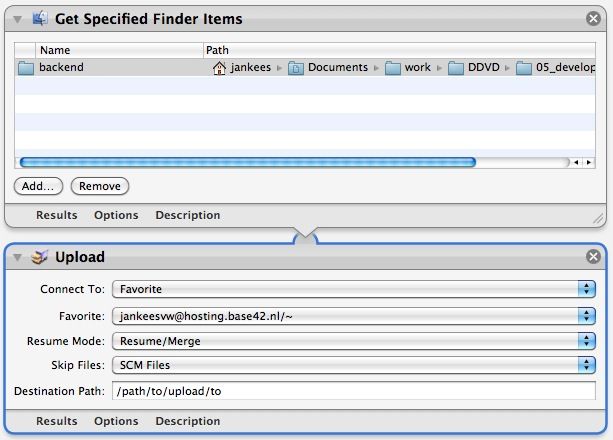Lessons Learned Starting A New Project
I would like to share some things I have learned during the last few years while working as a freelance developer. These are some basic steps I use for almost every project…
Use a default folder structure
Whenever I start a project, I always start by creating a new folder in my projects folder. The contents of this folder looks like this:

I prefix the folders with a number so they are ordered in a reasonable fashion. I only use the ’06_dropbox’ folder if I work with someone else, so that one is not always required..
Use revision control software
This one is kind of obvious, but I put it in this list because I talked to a developer last week who still was working without any revision control software. So I really encourage you to use SVN or Git. Personally I prefer Git because it’s much more portable and you don’t need to have a server to save your revisions.
Automate the boring stuff
Another thing I learned is that clients like to see the current progress of the project and because they aren’t always around to look on your screen (which is a good thing) I upload my progress to my staging server. If you use a regular FTP program this could take a few minutes. First you open FTP, login to your server, find the right folder and upload. This manual uploading has two problems. The first is that it’s really slow. The second; you can make a lot of mistakes. Those two reasons made me choose for automation. So you probably wonder how you automate uploading a bunch of files?
The easiest way is use Automator (which ships with every Mac), and create a workflow which resembles this:

Alternatively you could do it the way I do it, this is slightly more dificult and requires a server with SSH access. The majority of shared hosting providers don’t provide you this kind of access unfortunately. If you have access, you could use this code sniplet to upload your project using RSync. This method is much faster because it does a comparison on byte level before starting the upload.
URL="http://clients.base42.nl/projectname/"
rsync --recursive --checksum --progress --compress --update --delete folder-to-upload/ base42.nl:/home/jankeesvw/upload-to-this-folder/
echo $URL | pbcopy
echo "Upload to staging complete, link copied to clipboard: $URL"
/Users/jankees/bin/binaries/growlnotify -m "Upload complete, link copied to clipboard: $URL"
This defines a variable (line 1) then uploads it to my sever (line 2) copies the link to my clipboard (line 3) outputs a text to the console and to growl so I notice it’s done (line 4 and 5)
Use (and update) frameworks
When I work on projects I rely on open source projects; this is what I am currently using:
- Flash: Robotlegs, Navigator-AS3, LogMeister, MinimalComps, Tweenlite and Signals-as3
- HTML: Boilerplate, Blueprint, Compass and JQuery
- PHP: CakePHP
Another part of using frameworks is updating them, this can be a hard thing because it involves a lot of steps. That’s why I created an automation for this too! I put the shell script in a gist on github so you can see how it works. (Patrick Brouwer helped me building this). With my update script it’s really easy to update the external frameworks and I do this every few days when I work on a project.
Prepare a project to run in different environments
The last but not least is to prepare your projects to be ran in different environments. What this means is to be sure that your application is aware of it’s current location. To give an example. My flash project knows if it’s on the real server or on my local machine. If it’s on my local machine it generates some test data and shows some debug information. This does not mean I set something manualy everytime I publish to the server. This is some code that is smart enough to detect it’s current state. This is a glimp of what I use in Flash:
var browserpath : String = stage.loaderInfo.loaderURL;
var isLive : Boolean = true;
var localPaths : Array = [new RegExp("file://", ""), new RegExp("/localhost/", ""), new RegExp(".local/", "")];
for each (var regexp : RegExp in localPaths) {
if (browserpath.match(regexp)) {
isLive = false;
}
}
if(isLive){
trace("You are on a server!")
}else{
trace("Hi developer")
}
I hope this helps to optimize your workflow. If you have other suggestions please let me know!

Hello, I'm Jankees van Woezik
Like this post? Follow me at @jankeesvw on Twitter